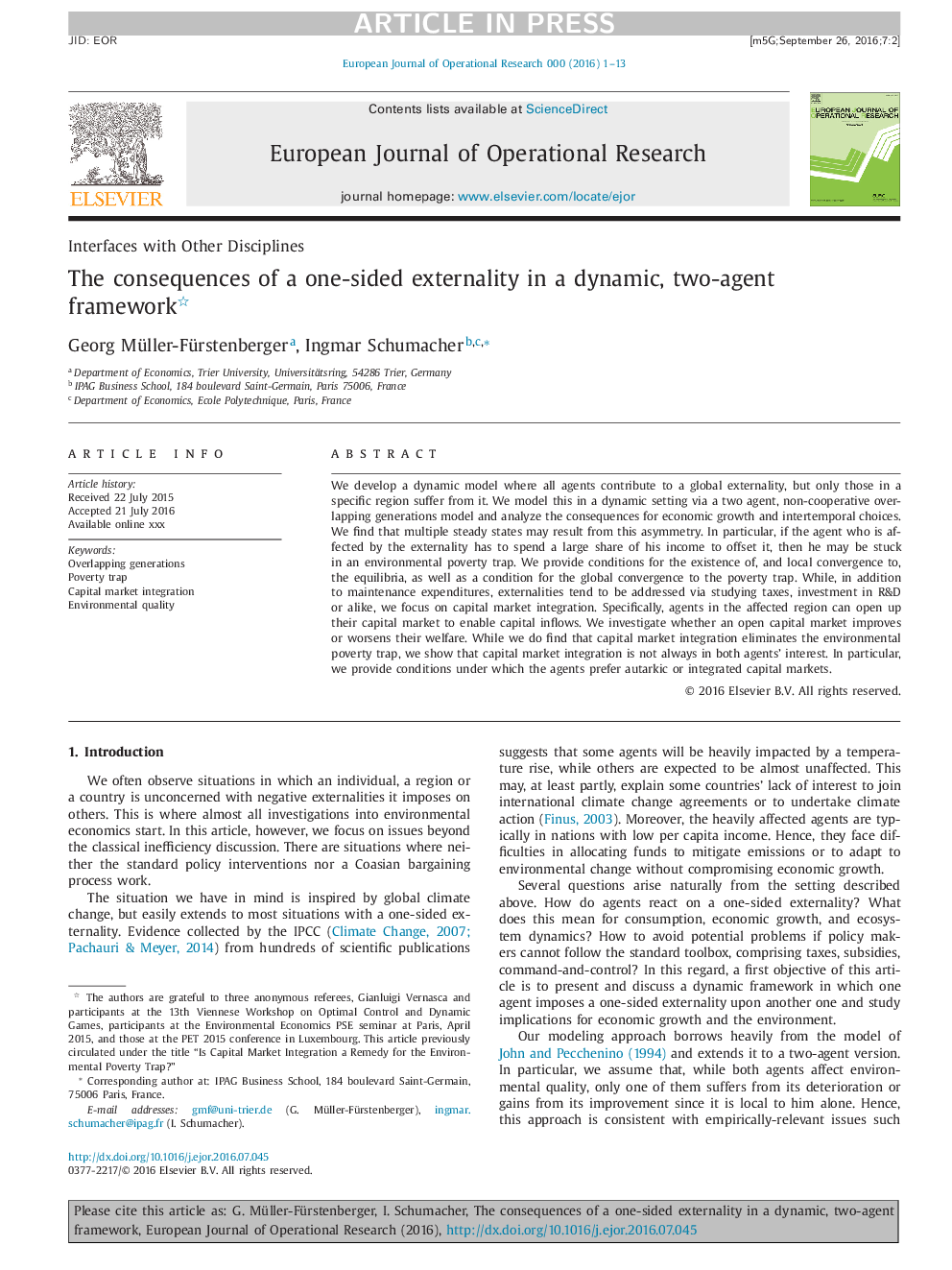| Article ID | Journal | Published Year | Pages | File Type |
|---|---|---|---|---|
| 4960140 | European Journal of Operational Research | 2017 | 13 Pages |
Abstract
We develop a dynamic model where all agents contribute to a global externality, but only those in a specific region suffer from it. We model this in a dynamic setting via a two agent, non-cooperative overlapping generations model and analyze the consequences for economic growth and intertemporal choices. We find that multiple steady states may result from this asymmetry. In particular, if the agent who is affected by the externality has to spend a large share of his income to offset it, then he may be stuck in an environmental poverty trap. We provide conditions for the existence of, and local convergence to, the equilibria, as well as a condition for the global convergence to the poverty trap. While, in addition to maintenance expenditures, externalities tend to be addressed via studying taxes, investment in R&D or alike, we focus on capital market integration. Specifically, agents in the affected region can open up their capital market to enable capital inflows. We investigate whether an open capital market improves or worsens their welfare. While we do find that capital market integration eliminates the environmental poverty trap, we show that capital market integration is not always in both agents' interest. In particular, we provide conditions under which the agents prefer autarkic or integrated capital markets.
Related Topics
Physical Sciences and Engineering
Computer Science
Computer Science (General)
Authors
Georg Müller-Fürstenberger, Ingmar Schumacher,
